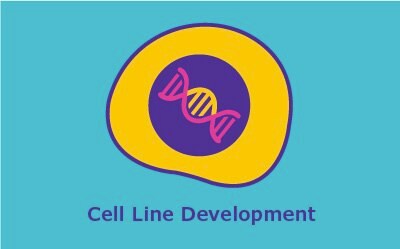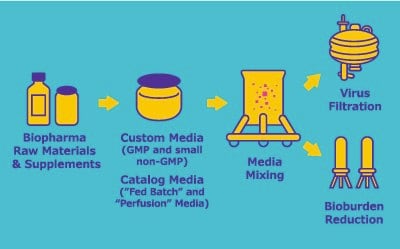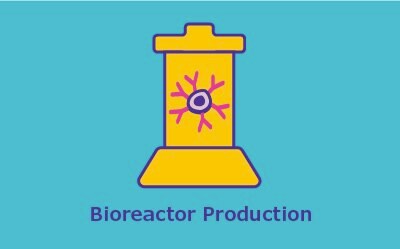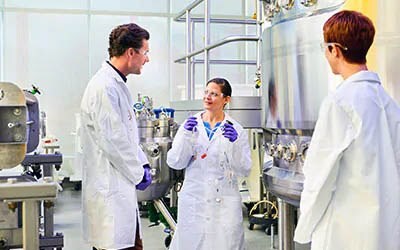Cell Line Development

Creating highly productive clonal cell lines is time-consuming, labor-intensive, and costly. Key considerations when choosing a cell line as the expression platform include:
- Selecting single-cell clones that can produce the biologic of interest
- Screening for clones that can stably produce the biologic at high productivity/titer, with high protein quality
- Ensuring successful scale-up with a robust cell
Related Product Resources
mAb Expression, Purification, and Formulation
Cell Line Characterization
Webinar: Ending MAP/HAP: A Stepping Stone for Accelerating Cell Line Characterization
Article: Viral Risk Mitigation: A Global Regulatory Perspective
BioReliance® Services – Cell Line Characterization
Product Characterization
Webinar: Mitigating Risks through Product Characterization
Article: Mitigate Risk with Effector Function Characterization for Antibody Therapeutics
White Paper: Early Product Characterization Mitigates Risks in Biologics Development
Cell Line Development
Tech Brief: Lay the Proper Foundation for Upstream Success
Webinar: Delivering More Efficient Therapeutic Protein Expression Systems through Cell Line Engineering
Webinar: Streamlining Biopharmaceutical Cell Line Development: Reducing Risk and Decreasing Timelines through Optimized Reagents and Processes
Webinar: Accelerate Delivery of High Producing Cell Lines
Article: Time Is of the Essence: Optimizing Cell Line Development
Application Note: The Combination of Ubiquitous Chromatin Opening Element (UCOE®) Expression Technology with the CHOZN® Platform
Webinar: Straight to the Point: Reaching Clinical Stage Development with a CHOZN® Cell Line
Plug & Play Upstream Development Service – BioReliance® End-to-End Solutions
BioReliance® Services – Cell Bank Manufacturing
Biopharma manufacturers place strong emphasis on accelerated clone development, with good quality and regulatory-compliant material for pre-clinical trials. One approach for achieving these goals is the use of a Chinese Hamster Ovary (CHO) platform that includes cell lines and optimized media and feed; this allows fast, easy selection and scale-up of clones for manufacturing, typically reducing cell line development time by up to eight weeks.
A second approach is partnering with a contract development and manufacturing organization (CDMO) that possesses the expertise and technologies to fast-track process development. The CDMO can offer a customized approach, such as automated mini-pool selection, expression cassette design, and super-transfection.
Ensuring continued stability, safety, and quality of the cell line
Cell line characterization is required by regulatory agencies to confirm the species origin and history of the cell line, while testing identity, stability, and purity. Characterization includes phenotypic or genotypic identity testing and a broad range of tests for adventitious agents.
Producing high-quality cell banks for development and manufacture
Production of a high-quality master cell bank (MCB) from the original therapeutic-producing cell line requires that cells be passaged regularly while in culture. However, this increases the chance of genetic alteration, contamination, and loss of expression constructs. It is therefore critical to passage the cells as few times as possible. To prevent alteration, cells are expanded and cryopreserved in a stable condition and stored at ultra-low temperatures. At later stages of development and manufacturing, a working cell bank (WCB) is required. A WCB is produced from a single vial of the MCB that has been grown for several passages and cryopreserved.
Measuring the quality of a biological product
The complexities of biological manufacturing, along with product heterogeneity introduced by cellular expression systems, present significant challenges when measuring the quality of a biologic drug. Newer high-resolution analytical techniques for product characterization can address these challenges early on, providing answers to crucial questions such as the structural attributes of a drug, how it functions biologically, and the effects on clinical performance.


Media and Process Development
Achieving consistent cell culture performance requires careful screening, selection, and optimization of media formulations and feed

Bioreactor Production
Choosing an upstream platform must take many considerations into account, including scalability and quality control of the bioreactors and mixers.

Monoclonal Antibody Manufacturing
Monoclonal antibody manufacturing is a highly templated approach used to produce mAb-based immunotherapies. Robust, scalable process solutions are required at every step to ensure high therapeutic concentration and process safety, while meeting speed-to-market and cost containment concerns.
To continue reading please sign in or create an account.
Don't Have An Account?